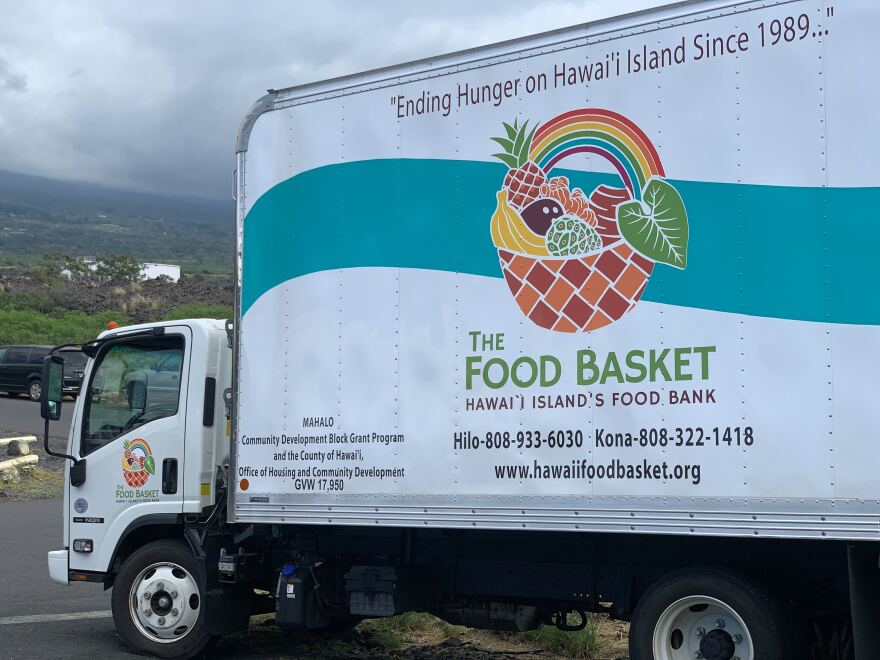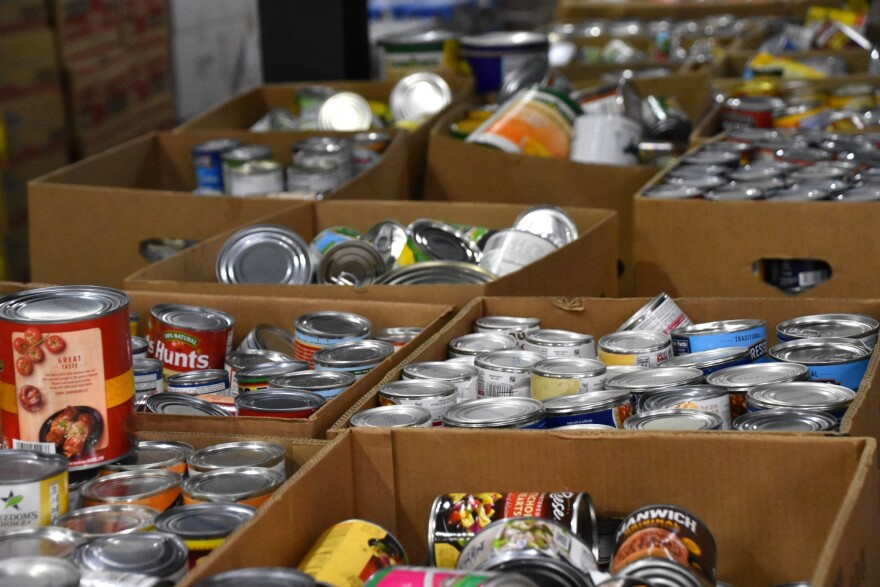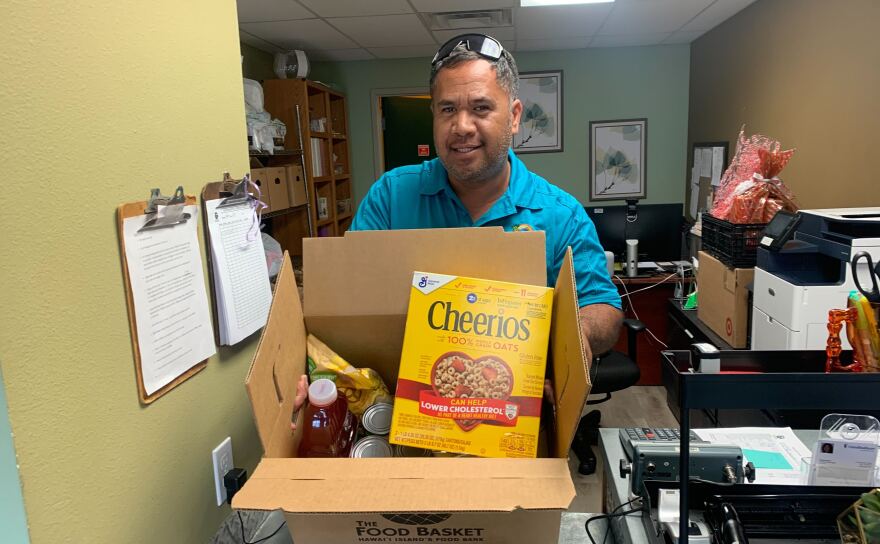In Kona on Hawaiʻi Island, David Haʻalilio Jr. opens an emergency food box on a shelf at one of The Food Basket's service locations.
Inside is food meant for a two-person household.
“It will consist of anything from vegetables to ready-meals, juice, tea, cereal — everything to make a nice meal,” he said.
These boxes are designed to get Kona residents through a lean day, and a good portion of the food they contain comes directly from the federal government.
“The food that comes in the box is through TEFAP or USDA, that is food received from the government, the federal government,” Haʻalilio said.
TEFAP, or The Emergency Food Assistance Program, is a low-income program administered by the U.S. Department of Agriculture's Food and Nutrition Service.
It's one of the many ways the federal government supports Hawaiʻi's food banks, but there's a risk of that support drying up under the Trump administration. Some of that support has already stopped or has been at least put on pause.

Canceled shipments and frozen funding across the islands
Six shipping containers worth of food for the Hawaiʻi Foodbank, which serves Oʻahu and Kauaʻi, were scheduled to be shipped to the state during the first half of the year. But those shipments have been canceled.
Amy Miller, the Hawaiʻi Foodbank CEO, said that Hawaiʻi has received additional food through a special bucket of TEFAP funding over the last several years before that program's support was frozen. That funding comes from the federal government's Commodity Credit Corporation.
“This included frozen chicken, pulled pork, eggs — really expensive, healthy food items that we were really excited to bring in and distribute. And six of those loads have already been turned back,” Miller said.
She said the food bank was anticipating $2.3 million worth of food from that bucket of funding this year.
HPR reached out to the state Office of Community Services, which handles the federal funds used to purchase the food the Hawaiʻi Foodbank was expecting. Officials said the USDA hasn't yet signed off on using those funds, although OCS said it hasn't been told why.

Similarly, the Maui Food Bank had been notified that it would receive additional Commodity Credit Corporation funding in January, but CEO Lisa Paulson said that was frozen, too.
“The conversation is completely stopped at this point because there's no definite 'yes' if the funds will be released as expected… I'm going to guess that those funds are not coming down,” she said.
The state's food banks are not solely funded by the federal government, but federal support does play a significant role.
The Maui Food Bank, which serves about 44,000 people daily, gets about $1.7 million worth of food from the USDA. Paulson said that in addition to actual food, the Maui Food Bank receives about $50,000 a year in federal funding.
Miller said about 20% of the Hawaiʻi Foodbank's revenue comes from federal sources.
Kristin Albrecht, the executive director of Hawaiʻi Island's The Food Basket, said that half of its budget comes from federal funds, making the looming threat of federal cuts an even bigger concern.
“I'm knocking on wood because we check almost every day, and so far, we're still able to draw down the funds that we need… I'm not beyond throwing salt over my shoulder or crossing my fingers and toes like everybody else in this world right now,” Albrecht said.
That federal assistance is sorely needed in Hawaiʻi.
Rising food insecurity
A recent report from the Hawaiʻi Foodbank found that 30% of local households experienced food insecurity in 2023, meaning they didn’t have enough food to meet their dietary needs or to live a “healthy and an active lifestyle.”
Miller said that, from October to December, the food bank served an average of 171,000 people per month between Oʻahu and Kauaʻi — up from 151,000 people served during the same period the year before.
Those service numbers are similar to those at the height of the COVID-19 pandemic, she said, when the tourism industry came to a halt and unemployment in Hawaiʻi skyrocketed.
The increasing food insecurity can be attributed to inflation and the rising costs of living, along with the loss of federal programs to help U.S. citizens in the wake of the pandemic.
Now, the proposals and actions by a Republican-controlled federal government could exacerbate that problem.
Nonprofits prepare for more federal funding cuts
The Food Basket's Albrecht said she worries — more than possible cuts to the food banks' funding under the Trump administration — about potential reduction in low-income federal benefits to U.S. citizens, including the Supplemental Nutrition Assistance Program, Medicaid and Medicare.
U.S. House Republicans have adopted a budget resolution calling for $2 trillion in federal spending cuts. The resolution calls for $880 billion in cuts to Medicaid and Medicare over the next decade and $230 billion in SNAP cuts over the same period.
If food aid or medical benefits were slashed to meet that goal, Albrecht expects the demand at local food banks would skyrocket.

“We've been through some pretty serious situations where, in the pandemic, suddenly we were serving six times more than we had before. So, I feel like we would be looking at a similar situation, if not larger. Seriously, it would take a lot more funding in order to meet that kind of need,” she said.
As the uncertainty around the Trump administration's possible cuts continues, the need for food assistance grows and the federal resources to fill that need shrink, the food banks are considering what to do.
Part of their plan is to pivot to local government agencies, whether on the state or county level.
At the state Legislature, a measure would set aside state funds for one-time grants to nonprofits, like the islands’ food banks, as they face federal freezes. Another measure would support a Farm-to-Families initiative to fund local food banks to buy locally grown produce.






